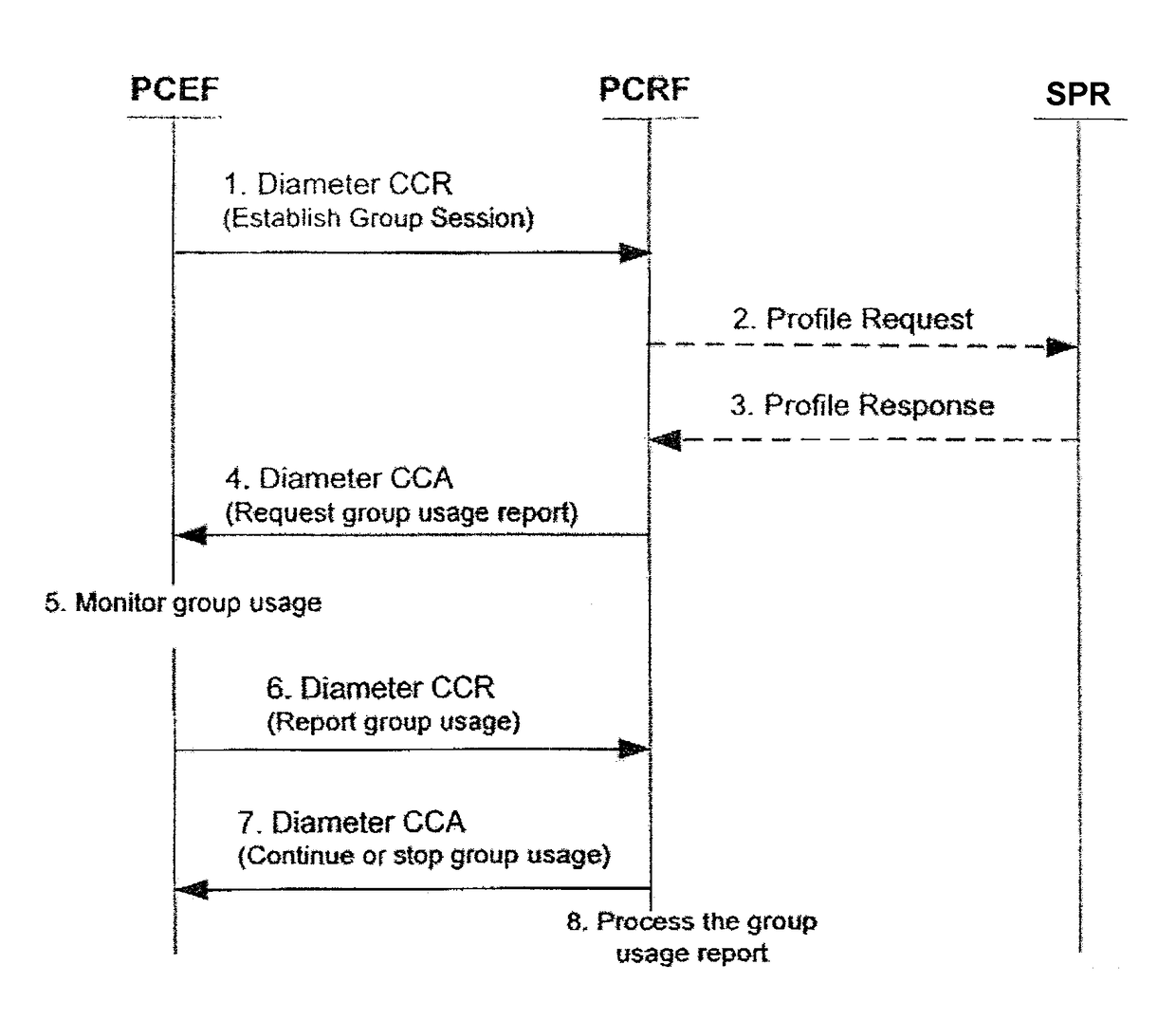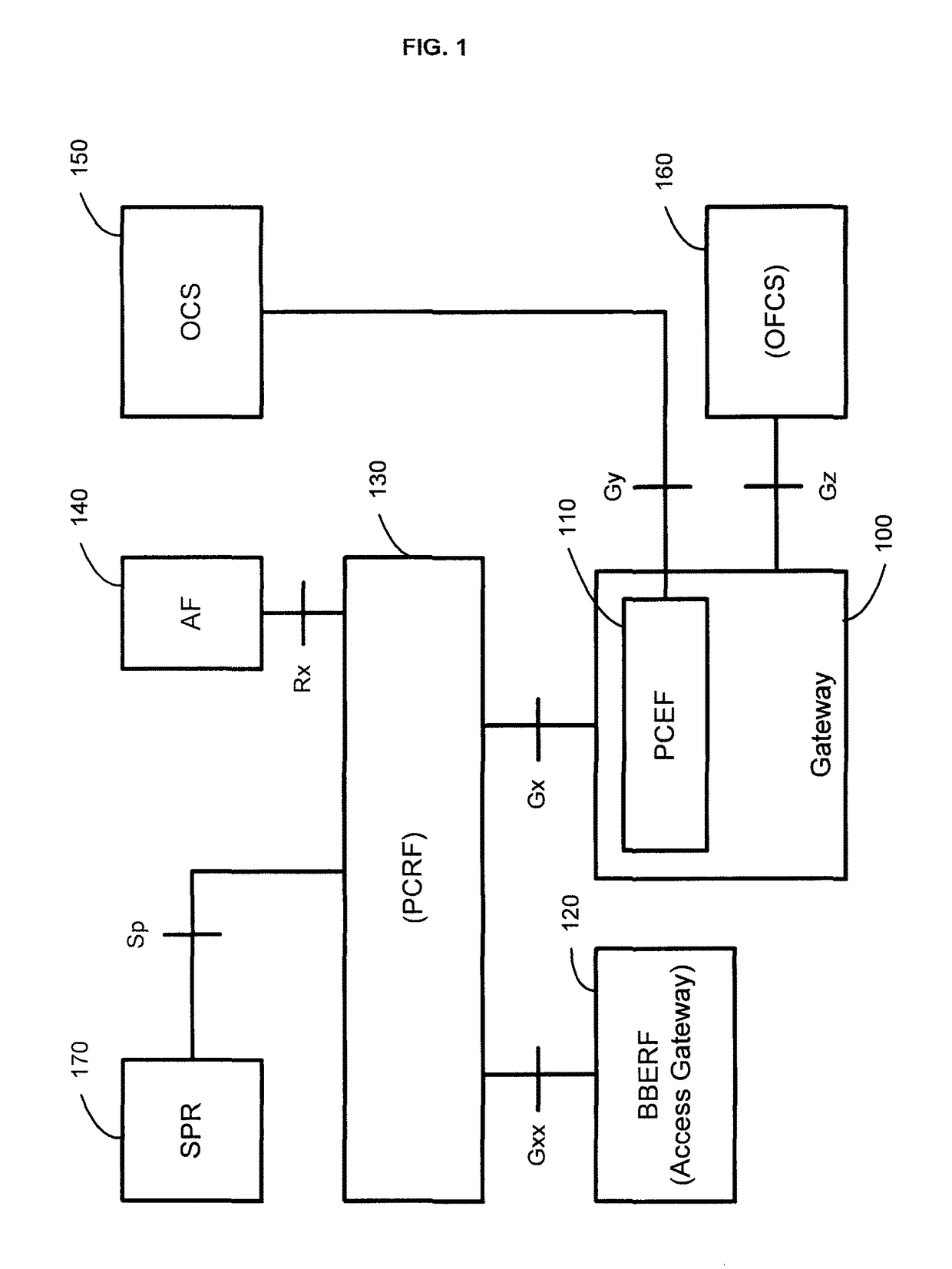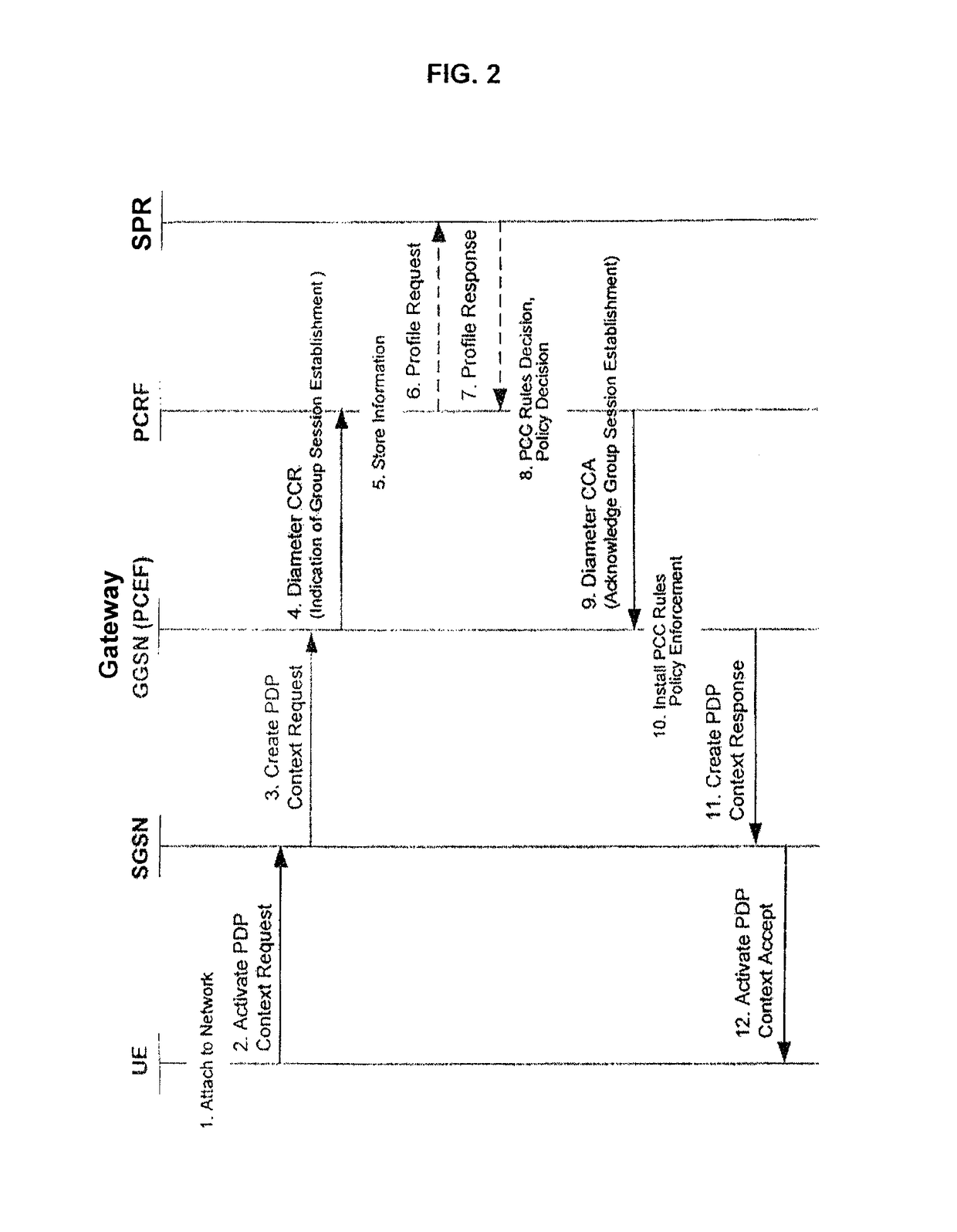Policy control for a machine-to-machine group
a technology of policy control and machine-to-machine group, applied in the field of policy control for machine-to-machine/machine-type communication services, digital transmission, broadcast service distribution, etc., can solve the problems of performance degradation, system overload of pcrf and pcef, and inefficient pcc mechanism of an mtc group
- Summary
- Abstract
- Description
- Claims
- Application Information
AI Technical Summary
Benefits of technology
Problems solved by technology
Method used
Image
Examples
Embodiment Construction
[0026]In the following embodiments explained it is assumed that all mobile entities belonging to a group have the same policy and charging control profile properties. This means that the PCRF, i.e. the policy and charging control unit, treats all members of the group in the same way. The group may be a group of mobile entities of a machine-to-machine group. However, the mobile entities may also be a mobile entity used by a human being, different mobile entities being grouped to a group.
[0027]Nevertheless, the invention is applicable as well to mobile entities belonging to a group having the same policy and charging control profile properties only for one or some of the properties in the policy and charging control profile. In other words, here not all but just one or some properties are the same. Doing so, a mobile entity can provide for a policy and charging control profile with both subscriber specific properties and as well properties specific to one or more groups.
[0028]In any w...
PUM
 Login to View More
Login to View More Abstract
Description
Claims
Application Information
 Login to View More
Login to View More - R&D
- Intellectual Property
- Life Sciences
- Materials
- Tech Scout
- Unparalleled Data Quality
- Higher Quality Content
- 60% Fewer Hallucinations
Browse by: Latest US Patents, China's latest patents, Technical Efficacy Thesaurus, Application Domain, Technology Topic, Popular Technical Reports.
© 2025 PatSnap. All rights reserved.Legal|Privacy policy|Modern Slavery Act Transparency Statement|Sitemap|About US| Contact US: help@patsnap.com



